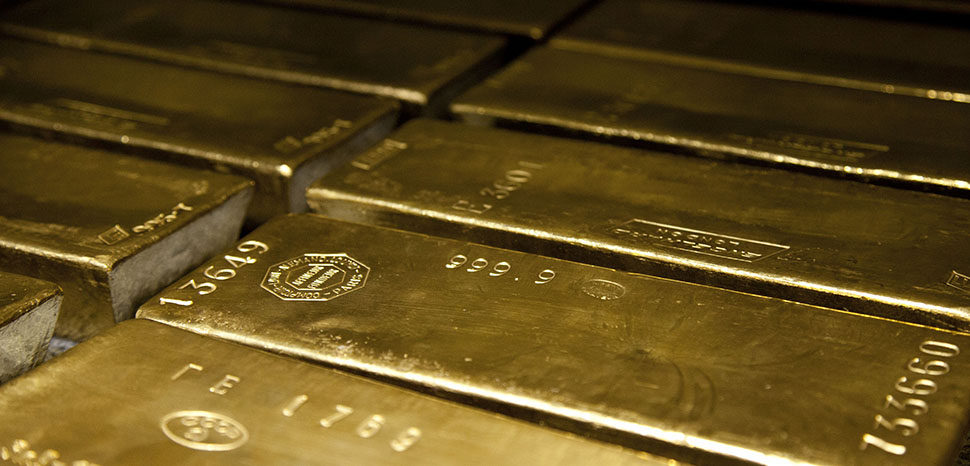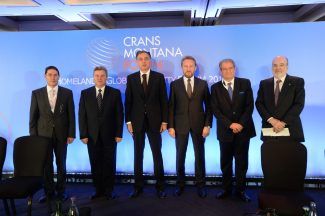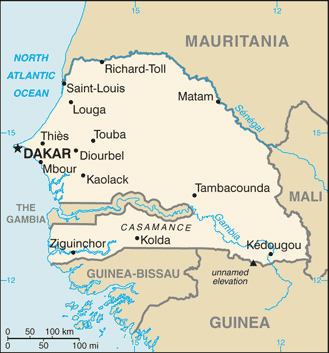The War that Russia is waging against the Euro-Atlantic (“Western”) civilization on the territory of Ukraine is already significantly affecting the geo-economic system of the entire World. There is no doubt that its economic consequences will be even more significant. This also applies to the influence on the sphere of monetary relations. And this is not surprising, since Putin clearly singles out the monetary goals of this war.
In his speech at the 19th annual meeting of the Valdai International Discussion Club in Moscow, October 2022, Putin accuses Western elites of playing “dangerous, bloody and dirty game” and even in starting the Ukraine war – as was the reaction from CNN and other experts. However, few people paid attention to the fact that Putin three times (first in a speech and twice more in response to questions that did not directly relate to this problem) addressed the issue of the Russian vision of the future international monetary system. According to him, “it is one of the key issues of today’s development and the future, not only of the financial system, but also of the world order.” In particular, he stated that “Russia considers inevitable the process of formation of new international financial platforms, including for the purposes of international settlements. Such platforms should be outside national jurisdictions, be secure, depoliticized, automated and not depend on any single control center.” In essence, this means commitment to one of two options: a return to the “independent” and “depoliticized” gold standard, which is not managed from a single control center, or (since gold was not even mentioned in the speech, despite previous attempts by the Central Bank of the Russian Federation to accumulate significant reserves of the “yellow metal”), to the idea of a “single international currency” (for which it would be, however, necessary to create a “world government,” and therefore a “single control center” with a clear and rigid policy, in contrast to the “blurred” decisions of the UN).
This misunderstanding of the essence of monetary processes was strengthened by the second thesis – about the need to expand settlements in national currencies. Moreover, for some reason, it was called a “precursor” to the creation of the above-mentioned “depoliticized” system of international settlements, although in practice and in accordance with logic, such a system increases the dependence of the monetary system on the economic policy of dozens of national currency issuers. By the way, international law (including the IMF Articles of Agreement) does not prohibit such settlements, but the practice boils down to the fact that the counterparties themselves prefer only the most stable and convertible currencies (among which the Russian authorities tried to place their ruble).
Remembering the Future?
In the first years of WW II, the successes of “German weapons” inspired the Nazi leaders to plan their future “world domination” on a large scale, including in the field of economy. After returning from occupied Paris in the third decade of June 1940, Hitler instructed his minister of economy and president of the Reichsbank, Walther Funk, to prepare a plan for the post-war reorganization of economic life in Europe. Even before the war, Germany had coped relatively well with depression and unemployment, and had a strong balance of payments (despite the large import needs of wartime preparations). Now Nazi economic recipes could be offered to all of Europe. And not only Europe.
Walther Funk announced the main principles of the “New Order” (Neuordnung) on July 25, 1940. It was to be based on close cooperation between Germany and Italy and the use of methods that would not allow the “unregulated play of economic forces.” In particular, it was assumed that the existing experience of bilateral economic relations would develop into a system of multilateral trade, and balancing settlements would be carried out through currency clearing. Such a Monetary System would provide for fixed parities and stable exchange rates. Each government would regulate its balance of payments (by administrative methods), and therefore, problems of international imbalance would not arise. The clearing system had to have a surplus of gold for payment purposes. But it was emphasized that Germany would never agree to a system based on a means of payment whose value it could not determine.
Of course, the world financial center had to move from London to Berlin, where clearing settlements between European countries were carried out. As for the USA (which at that time had not yet entered the war against Germany), economic relations with them were supposed to be built depending on whether they would stop discriminating against German goods.
The global economy would have to be divided into several blocks and the leading currency of the Great German Economic Bloc (Grosswirtschaftsraum) would be the Reichsmark. It will be linked to the currencies of other bloc countries by a fixed exchange rate, which can be changed only by mutual agreement. However, the ultimate goal was to transform the Reichsmark into a single common currency.
This project, for obvious reasons, was never implemented, and the post-war International Monetary System was built on completely different foundations (which at that time were just beginning to be developed).
Indeed, for the second time, history repeats itself in the form of a farce.
So, what consequences can the current war have for the World Monetary System? Naturally, it depends on its outcome.
Back to Gold?
Nevertheless, judging by everything, exactly this scenario was predicted by Putin’s experts as a consequence of Russia unleashing a war against Ukraine, and then with the entire “collective West.” This is evidenced by the practice of accumulating gold reserves under the Central Bank of the Russian Federation during several pre-war years. Together with an increase in the share of foreign exchange reserves in Chinese renminbi, this should, in their opinion, ensure the possibility of making international payments (first of all, for the import of goods of a military-strategic nature in the form of dual-use technical equipment), if not directly by pouring out “yellow metal,” then, at least, with dollars received as a result of the sale of gold on the free market. However, as life has shown, this market turned out to be not as free from state regulation as it was originally imagined, and claimed by gold money adepts since the time of the Soviet-era discussion above. This was enough to include transactions with Russian gold in the list of sanctions approved by the US Congress, making the sale of gold to Russia practically impossible. (Except for the Chinese renminbi, which in Russia turned out to be more than enough, despite the fact that the People’s Bank of China had also significantly increased its gold reserves in advance).
So, the only realistic way to use the accumulated reserves of the “yellow metal” by the central bank was to mint gold rubles from profile of the “Russian leader” for internal use. Reflecting on the new situation, in connection with the war against Ukraine and the West, which was started by Russia, Professor of the University of Turin Enrico Colombatto discusses the possibility of “creating a hard, commodity-based ruble, as opposed to its present fiat status (paper money). A ‘hard ruble’ would possibly be the best way of boosting Russia’s prestige, killing inflation and meeting Russians’ expectations for a stable currency, not unlike what happened in Soviet Russia when Lenin introduced the gold-backed “chervonets” in October 1922. Is that a feasible project? Could oil or gas replace gold as the commodity standard? Could that pave the way for other commodity-based currencies, like the Chinese yuan? (…) A hard ruble would probably be a partial domestic success, but only if it were really hard – gold coins that individuals can hold and possibly hide away. Liquid rubles – certificates (paper money) backed by oil and gas – will not do because people would not trust a commitment to convert paper into gold, let alone into gas or oil.”
As far as the gold currency is concerned, so much time and effort has been devoted to realizing its prospects over the past decades (at least starting with the US Gold Commission of President Reagan’s time), that raising this issue again seems simply frivolous. And as Professor Colombato rightly points out, “indeed, one can conclude that the recent international tensions have probably killed all grand-scale projects for a golden yuan, too”. The same can be said of the “golden dinar,” “golden ruble,” and any other “golden currency.”
But all explanations regarding not only the impossibility, but also, most importantly, the absence of the need to restore any form of gold standard seem useless. The desire of neophytes to return to the “golden times” is similar to the naivety of first love: no matter how many adults warn about its transience, youth believes that it is forever… And that’s great! Let’s not convince anyone otherwise.
The author can thus only repeat his own conclusion made a few decades ago:
“In a hypothetical situation of the collapse of the economic system, a return to gold as a monetary commodity could actually happen, but this will in no way indicate that gold is valid money even in the current conditions. Moreover, one can even imagine such a situation when humanity will be pushed back to an earlier stage of the development of economic relations. Recall that the restoration of Cambodia’s monetary system, which was destroyed by the Khmer Rouge, began with the issuance of new banknotes, and 1 Cambodian Riel was equal in value to 1 kilogram of rice. It is unlikely, however, that anyone will dare to seriously claim that rice can serve as a measure of values in modern conditions.”
Unfortunately, this is exactly what could happen if Russia uses nuclear weapons. And then, of course, a return to the gold standard is possible. Unless, of course, there’s no one left alive who’s capable of minting gold coins.
But what will the International Monetary System be like if we exclude this extremely unpleasant apocalyptic scenario?
Pax Dollar Americana…
The economy of the United States of America still retains the role of the “core,” which continues to develop not according to general rules, but using its special place in the world economic system. However, the further development and spread of globalization caused the emergence of a new periphery in the form of newly created markets of a number of countries in Asia and Latin America. So the modern “periphery” is much more numerous and heterogeneous. In particular, even in the 1960s, the levels of coordination of actions and general economic integration of Western Europe were higher than those that Asian countries demonstrate today, which directly affects their ability to “collectively respond” to challenges initiated by the “core” of the global economy. As for other industrialized countries (say, OECD member countries) and, first of all, the countries of the European Union, they create a kind of “core shell” with “inner” and “outer membranes” (respectively, “old” and “new” members of the Union) or, as Barry Eichengreen calls them, the “third block”, which has neither opportunities for catch-up development (as newly created markets) nor the privileges of a country with a reserve currency.
There is no reason why the dollar should continue to fall in the future until there is a need to settle the balance of payments. So it is unlikely that the status of the dollar in the modern monetary system is simply an “exorbitant privilege.” Rather, it is a ‘duty of the dollar’ – pleasant and profitable, but still a duty, conditioned by the objective state and needs of the global economy.
On the other hand, the value of the dollar only increased under the conditions of restrictions on dollar transactions as a result of sanctions against Russia. It is no coincidence that George Friedman, a well-known analyst in the field of geopolitics, speaks of the “weaponized dollar,” considering it “perhaps the most powerful weapon in the world,” with the help of which the United States creates a “coalition with countries that are far from the place of hostilities actions, but close to the dollar” (for example, with Japan).
At the same time, as Gita Gopinath, the IMF First Deputy Managing Director stated at one time that payment sanctions against Russia can also cause the opposite effect – the fragmentation of the world monetary system (its division into separate “currency blocs”) and the relative weakening of the role of the dollar; although, under such conditions, it will remain the main global currency. So, it is looks that Pax Dollar Americana will survive in any case.
As for other scenarios – namely, the emergence of a supranational currency (for example, based on SDRs, although this “traditional” option is not the only one) or a network currency (of which many consider cryptocurrency to be the prototype), it seems unlikely that they will be the consequences of a war. Although they can become the consequences of the coming peace.
The views expressed in this article belong to the authors alone and do not necessarily reflect those of Geopoliticalmonitor.com.




